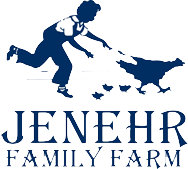We all have a long to-do list, many of which we do simultaneously – start the washing machine so it runs while making supper. I have a similar system when it comes to the items in the CSA share, with a successional process of using the producing.
But there’s always a point in the week, perhaps the day before scheduled to pick up the next new CSA share, that I have things still in the refrigerator. My go-to plan: Eat, Cook, Preserve, Share.
EAT - My plan starts with what will I just eat – it might raw in a salad, sliced and diced or grated. I might steam or roast some items, combing things into simple or elaborate recipes, creating layers of flavors. Whether its the end of the week or when I first unpack my shopping bags, I have a rough idea of what will be used how. Some of you will have detailed menu plans, others a rough sketch of a plan.
COOK – There’s a point where I realize that regardless of my best intentions, I am not going to eat something. Its a little unusual perhaps, doesn’t quite fit with the other items in the refrigerator, freezer or pantry. But I need to use it because otherwise it will likely go bad right there in the crisper drawer. So my next step is to cook it. Any vegetable cooked will last a few more days than that same item left uncooked. And while cooked usually means heat, I consider transforming lettuce into a green smoothie “cooked”. Let’s call it transformation.
PRESERVE – Some items can be frozen without blanching (rhubarb cut into 1-inch pieces) but most need some sort of heat to preserve them for later use. This is the point where you take those steamed carrots that you haven’t eaten, puree them into a soup base and freeze in a “ziplock” freezer bag. Sautéed greens are perfect when frozen in a thin layer and then used later in the week or month inside a lasagna. Even herbs run through the food processor with a little bit of oil, then frozen in ice cube trays work.
SHARE – I hear from a number of CSA members that they just don’t like ______ (fill in the blank). My first response is to suggest different ways to prepare the item. But if it’s still something you don’t like and you know it will only sit shriveled in your crisper drawer – share it with a neighbor, pass it on to your coworker, give your in-laws a call and invite them to stop over and grab the bunch of whatever that you won’t use, but you know they love. This part of a CSA share is one of my favorites, because it means you have to know someone well enough to know what they like to eat. I might not offer my neighbors Tom and Julie a bag of mustard greens, but if I know they’d gladly use up any extra rhubarb, dropping off a piece of pie or small tart as a thank you.
As you unpack each item in your share this week, mentally run through the Eat, Cook, Preserve and Share list, creating the first round of a menu plan for the week.
